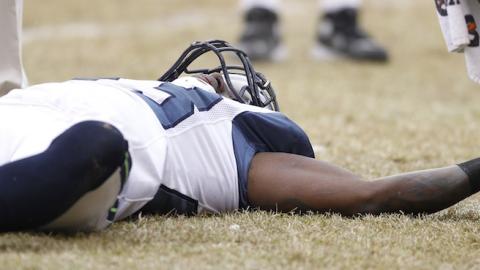In the 1960s it was Rachel Carson vs. the chemical industry and Ralph Nader vs. the automakers. Fifty years later we have Dr. Bennet Omalu (the neuropathologist played by Will Smith in the movie Concussion) vs. the National Football League. Such brawls between industries and their activist attackers are legend, as compelling as Ali vs. Frazier. Threatened industries and institutions have never shied away from fighting off attacks. Now there’s the battle between The New York Times and the NFL over the newspaper’s allegations that the NFL knowingly used flawed research about concussions and consistently denied their impact. (The NFL has disputed the Times' account and asked for a retraction, which the Times has refused to make.) The NFL also tried to discredit Omalu, and is still fighting the proposed financial settlement for brain-damaged former players and their families.
But in an era when the public has much greater power in demanding transparency and responsible business practices, when even fringe ideas can quickly gain millions of followers through social media, industries can no longer pummel or ignore their detractors. Rather, they need to view such activists in an entirely different light: as a harbinger of future consumer tastes and public sentiment that can make or break entire industries.
When attacked for what they sell, companies that are forced to change go through five stages before they get the message:
* Deny there is a problem.
* Defend current practices and products.
* Signal that they might be willing to listen.
* Reframe their points of view.
* Make changes to their traditional business model.
But as the tobacco, asbestos, and other industries have shown, this process can take decades. Instead of repeating this protracted and painful process, industries need to embrace, not repel, their attackers. The reason is simple: Very often what lies deep within activists’ seemingly unreasonable and accusatory demands is a substantial business opportunity: a market segment with needs. The activists trying to kill your company’s products or practices could actually represent a sizable segment for products and practices that meet their strident sensibilities. And continuing to treat them as Public Enemy No. 1 won’t win them over.
That’s the way the NFL treated a growing number of critics such as Dr. Omalu, until this month. On March 14, the NFL, a $12 billion industry by itself, finally admitted that repeated concussions were causing too many former players to die prematurely of traumatic brain injuries. This came 14 years after the death of its first documented victim, former Pittsburgh Steelers star center Mike Webster, who became homeless because of his cognitive decline. An NFL committee to study brain injuries spent years denying any link, ignoring injured players, their agents, doctors, and even the American Academy of Neurology. At one point former NFL Commissioner Paul Tagliabue dismissed concussions as a “pack journalism issue.” The Nigeria-born Omalu said the NFL insinuated that he was a “voodoo doctor.”
This name-calling, stalling, and failure to own up are unfortunately commonplace in the history of activist-industry wars. Rachel Carson faced fierce criticism from the chemicals industry after the publication of her 1962 book Silent Spring created a groundswell of environmental activism that helped lay the foundation for the creation of the Environmental Protection Agency, in 1970. Fifty years ago Ralph Nader successfully campaigned for safer cars while automakers balked and one, General Motors, even spied on his personal life to try to discredit him.
Threatened industries can’t do this anymore. The Internet can make anyone with a catchy message an “expert” who can quickly attracts legions of followers. Whether activists are true experts like Omalu and or Nader or a charismatic non-experts, industries can no longer dismiss their impact. Consider the panic over vaccinations causing autism, spearheaded by actress Jenny McCarthy and based on faux science that was eventually debunked, but not before thousands of children went unvaccinated.
Or take the case of “Food Babe” Vani Hari. She holds a degree in computer science, not nutrition, yet she rallied 380,000 members of her “army” to sign a petition to get Kraft to remove dyes from its macaroni and cheese. With the right positioning and messages, and with social media as their global megaphone, such activists hijack the discussion on important issues away from the industries, the scholars, the regulators, and even from experts with deeper knowledge of the issues. Their accusations are quickly shared on social media and given legitimacy in the mainstream press.
All this means industries and the companies within them can’t engage their attackers using the same playbook most have used for 100 years. Denials, retaliation, stalling, and name-calling only delay the process of resolving the problem, at great cost to the people who suffer most from it, and at great cost to the industries and activists as well. Think of the smokers who died over the five decades that the tobacco industry spent denying the deadly facts about cigarettes.
Industries and their detractors need to engage differently. But first they need to overcome profound differences in how each side thinks. Activists want to restrain or cripple industry; industries want to protect their interests, their stakeholders, and the status quo. You might say that industries often behave like solids, impervious or slow to change, stuck in tradition, and activists are like gases, ready to spark dramatic changes without regard to the fallout.
So how should industries under attack respond? They should try to bring their attackers inside the tent, by regarding them not as thorns in their sides but as a live focus groups, whose demands should be regarded as potential business opportunities. Activists can represent the constituency for the next best product or service not yet in vogue. They can provide a glimpse into future public sentiment and consumer trends, which often are shaped by emotional factors rather than hard science, as has happened in the GMO debate and the debunked link between vaccinations and autism.
Wishful thinking? Not at all. A few industries that have done this over the past few decades—beer, food, and others—have reaped huge gains in new customers, and image boosts as well.
But replacing antipathy with sympathy requires a dramatic shift in the mindsets of executives who run companies in an industry that’s under attack. Traditionalist “solid” thinking companies abhor change and redouble their focus on today’s customers at the risk of being blindsided by consumers tomorrow. They concentrate on flagship products that are falling out of favor—think sugary beverages and supersized portions—and circle the wagons, demonizing their attackers and striking back against threats like regulation.
What these executives need is a more of what I’d call a “liquid” approach to dealing with their most ardent critics. That means lowering their defenses, openly admitting their contributions to the problem, and actively identifying business-building solutions to the issues raised by activists. Likewise, the activist “gases” must temper their scorched-earth attempts to ignite change and burn down the system without regard to consequences. They must respect that companies need to make money, then showcase how better products, services, and practices can help them achieve that. They must learn to avoid harsh stances for the perfect result and be open to practical solutions that are workable for both sides.
This liquid approach has worked before. As an example, with the Healthy Weight Commitment Foundation, founded in 2009, large food companies have worked with public health advocates to reduce obesity. As part of their pledge, they have removed 6.4 trillion calories from the American diet. A few decades ago, Anheuser-Busch listened to the concerns of Mothers Against Drunk Driving and introduced the “Know When to Say When” campaign, which helped substantially reduce drunk driving deaths while concurrently increasing the company’s market share to more than 50%. Today, Coca-Cola’s smaller soft drink cans, which deliver less calories and sugar, are popular with consumers. Their sales grew 15% in 2015.
The NFL’s attack-dog playbook is clearly not working in today’s environment and is guaranteed to fail. Full transparency is now the minimum ante for credibility for any industry. The NFL would better serve its fans—and its own selfish interests--by owning up to its role in player safety, funding safety, and neurological studies conducted by public health researchers with impeccable credentials, and by seeing the hidden opportunity the activists are presenting to it. That opportunity is an exciting yet much safer game, one that would build stronger fan support and broaden the sport’s appeal.
















